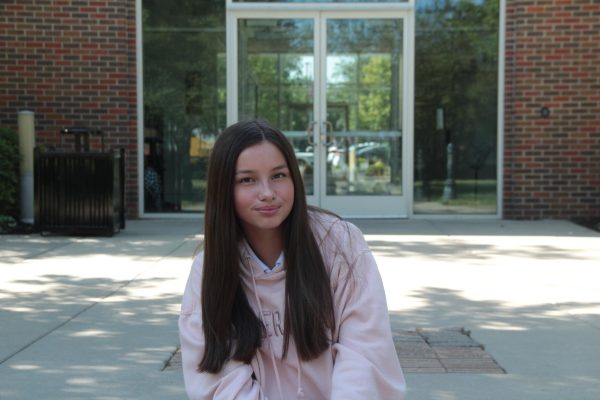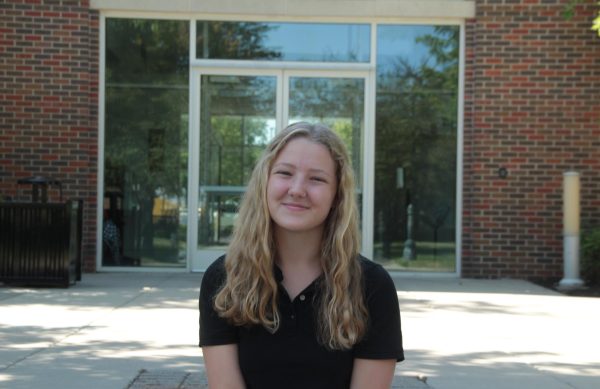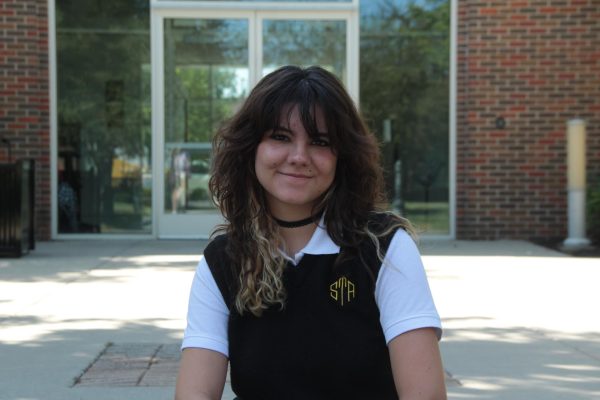Ya Like Jazz?
Jazz for me has never been just a genre, let alone elevator, background music. I have incorporated jazz into my life beyond just playing through my headphones. To me, to make a genre a lifestyle rather than simply a favorite, is the only way to ensure its survival.
February 12, 2021
“Blue in Green” by Miles Davis will always remind me of my dad. The man likes jazz, but he loves Miles Davis. The music that filled the house while cooking dinner or lounging in the living room has been the crescendos of trumpeters like Chris Bottii and outstanding pianists such as Thelonious Monk. I grew into actively loving jazz about sophomore year of high school. When I began to dive into it on my own, a whole world opened up to me. A world that is far too underappreciated by the most teenagers.
Last winter, my family and I attended a jazz show at the Blue Note Jazz Club in New York City, which has served as one of America’s epicenters of jazz since 1981. When I was there, a 22 year old woman named Veronica Swift performed. She had the style of Ella Fitzgerald with the spunk of Gen Z — raunchy, young, and utterly cool. Swift serves as a figure of revival in young generations, acting as a wormhole through time reaching back and pulling jazz towards the present. But her and many artists attempting the time grab are grossly under appreciated.
Gen Z serves as a catalyst of what artists will be propelled into timeless fame and what artists will die out into “classics.” While Veronica Swift may be on repeat on my dad’s Spotify, if her audience does not expand to Gen Z’s ears, then her music could be lost with the style of jazz that she utilizes.
Kansas City deserves to be more widely recognized by local teens for its rich jazz history. 18th and Vine serves as the center of the jazz district, lined with jazz clubs and a turquoise-colored statue of the great saxophonist, Charlie Parker. Parker was born and raised in KC before becoming one of the greatest jazz musicians of all time. For a city that owes much of its historic development to the jazz movement, the knowledge of it dies with each passing generation.
There is one hole-in-the-wall place that stands as a shrine for jazz: Downbeat Coffee + Tea. A bit off the beaten path in the realm of KC coffee shops. It is one of the few places I have found that makes an effort to champion jazz outside of formalities, such as structured museums or typical jazz bars.
The shop is located on the top floor of a light blue house on 39th street, and immediately upon entering, black and white photos of great jazz musicians such as John Coltrane greet you. There is also a huge vintage stereo set that is consistently playing some type of jazz. It has other quirks such as featuring different KC-based artists on the walls of the shop or a grand piano sitting in the corner next to an old couch, but the construction of a jazz atmosphere is what keeps me coming back. I highly recommend visiting yourself if you’re ever in the area.
I am constantly hearing the want for “new music recommendations” among my peers. I also recognize that there is a growing hunger to expand music taste horizons, especially with an expansive digital library at our fingertips. My recommendation to you now would be jazz of course — late 50s early 60s is my favorite era — but I also want to show you that you can implement any underappreciated genre of music into your lifestyle beyond just listening to it.
Understanding the depth of a genre past pressing play on Spotify is what keeps that genre alive. In a world where creating music is easier than ever — and anybody can become a SoundCloud rapper — making an effort to preserve dying genres is more important than ever.
One of my recommendations for understanding the depth of a genre is understanding the main figures behind the genre. I personally love reading up on explanations of the different styles per artist and how they contributed to the shift of a genre as a whole. Even just gaining a basic understanding of the specific time period you find yourself drawn to will make a huge difference. In that, understanding the historical context behind the genre is just as important as the features within it.
Jazz is the perfect example of a genre that in of itself has been left to die. The intricacies of model jazz — improvisation with chords — and speaking up about the oppressions of Black people — Billie Holiday with “Strange Fruit” — has been lost to using it as background music in an elevator. Today, a jazz song is seen as music you play at brunch to talk over.
So please do yourself a favor: listen to jazz, take it in as more than what it has become and live vicariously through your favorite genres because their rich histories deserve more than to gather dust on the shelf of music.











